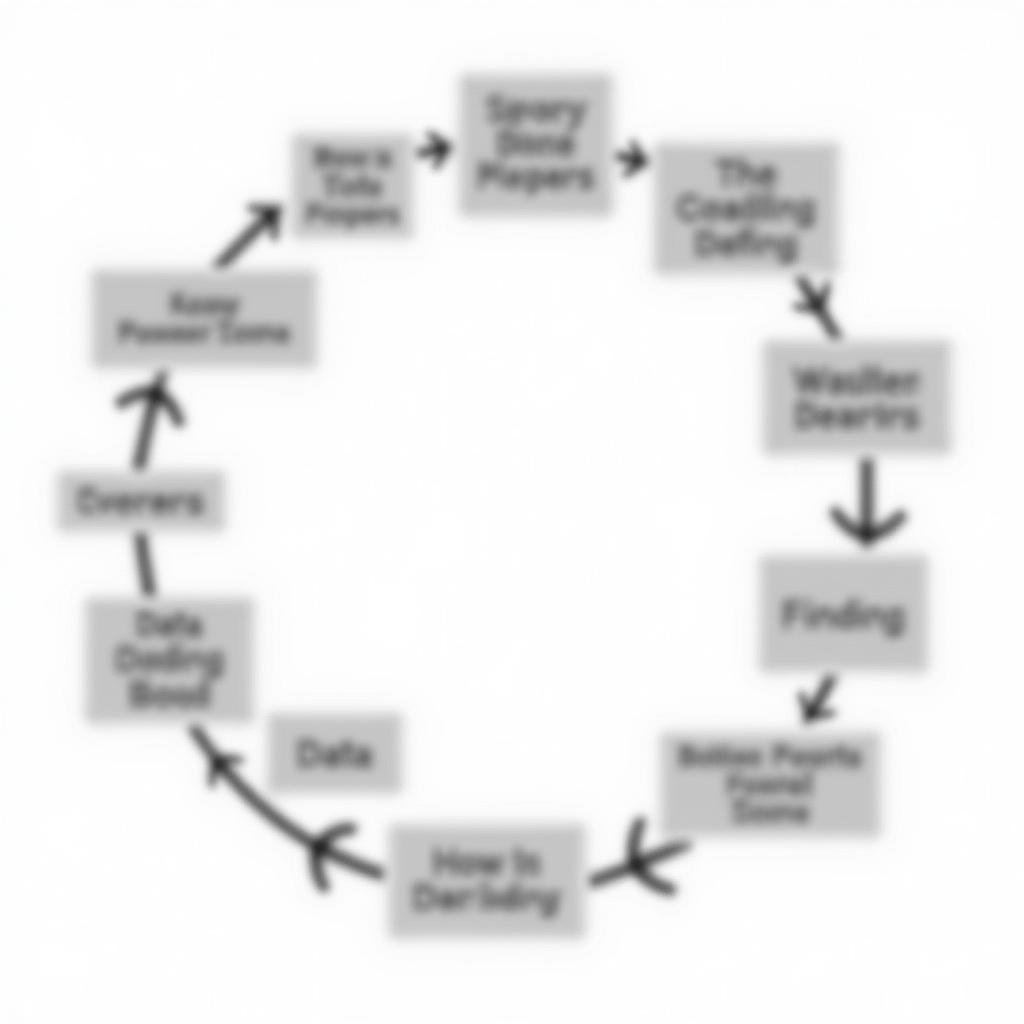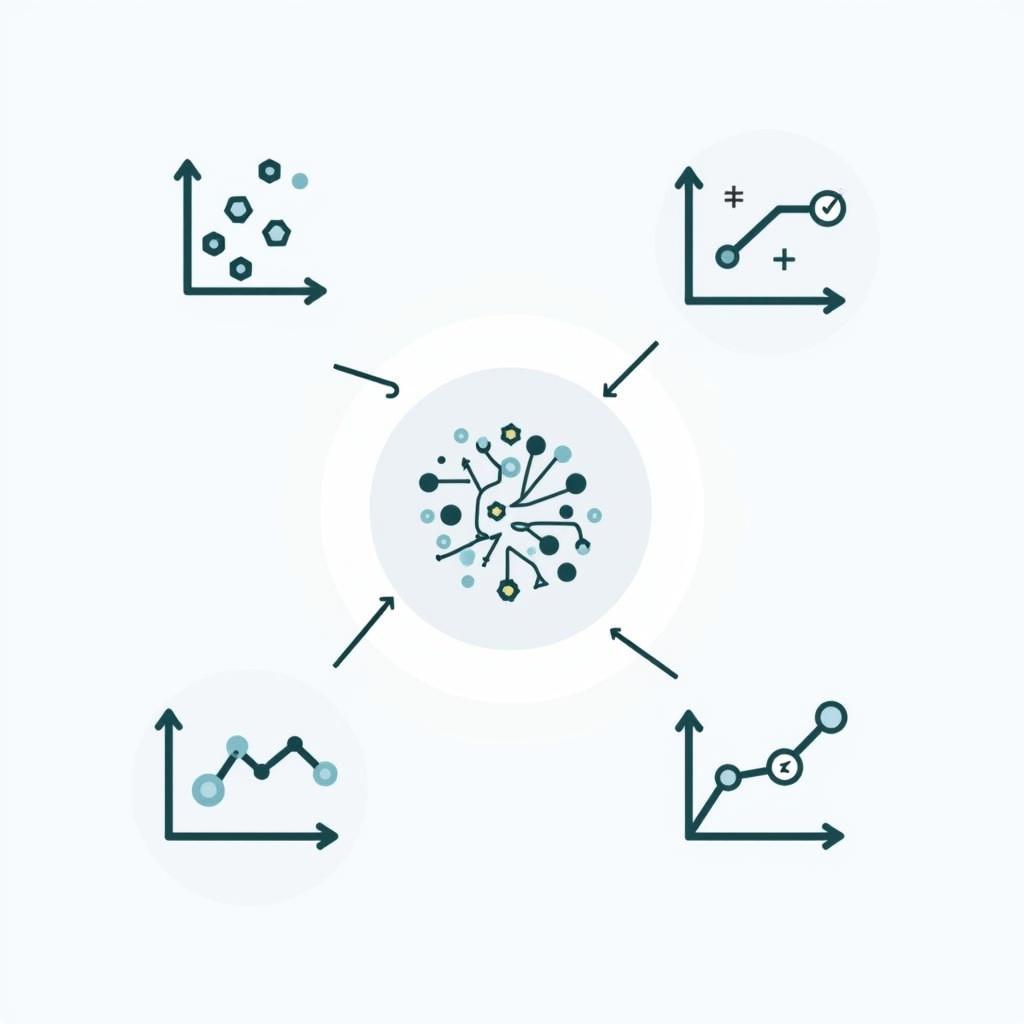Data Analysis Research Papers are essential tools for uncovering insights and patterns hidden within data. These papers go beyond the surface, utilizing statistical methods and analytical techniques to transform raw data into meaningful conclusions. Whether you’re a seasoned researcher or just starting, this guide will equip you with the knowledge to understand and navigate the world of data analysis research papers.
Diving Deep: Understanding Data Analysis Research
Data analysis research papers are like detectives meticulously piecing together clues. They aim to answer specific research questions by examining relationships, trends, and anomalies within datasets. Imagine trying to understand the mysterious forces behind paranormal activity. A data analysis research paper might investigate the correlation between reported ghost sightings and environmental factors like electromagnetic fields.
 Data Analysis Research Process
Data Analysis Research Process
The Building Blocks: Key Elements of the Paper
A typical data analysis research paper follows a structured format, guiding the reader through the research journey:
1. Abstract: This concise summary provides a snapshot of the entire paper, highlighting the research question, methodology, findings, and implications.
2. Introduction: Setting the stage, the introduction presents the research topic, its significance, the specific research questions addressed, and a brief overview of the paper’s structure.
3. Literature Review: Like a paranormal investigator researching historical accounts, this section examines existing studies and theories relevant to the research topic, establishing the context for the current investigation.
4. Methodology: This section outlines the research design, including the data collection methods, the specific data analysis techniques employed, and a rationale for these choices.
5. Results: Here, the findings are presented in a clear and concise manner, often using tables, charts, and graphs to visualize the data and key findings.
6. Discussion: The implications of the findings are discussed in detail, connecting them back to the research questions, comparing them with previous research, and addressing potential limitations.
7. Conclusion: This section summarizes the key findings and their significance, emphasizing the study’s contributions to the field and suggesting avenues for future research.
Choosing the Right Path: Types of Data Analysis
Just as paranormal investigators use different tools to study different phenomena, researchers employ various data analysis techniques depending on the nature of their research question and data:
- Correlational research questions explore relationships between variables, seeking to understand if and how they change together.
- Regression analysis aims to predict the value of one variable based on its relationship with other variables.
- Qualitative data analysis delves into non-numerical data, such as interview transcripts or textual documents, to identify themes, patterns, and meanings.
 Different Data Analysis Approaches
Different Data Analysis Approaches
Ensuring Accuracy and Reliability: The Importance of Rigor
Rigor is paramount in data analysis research to ensure the accuracy and trustworthiness of the findings:
- Validity: The chosen data collection and analysis methods should accurately measure what they intend to measure.
- Reliability: The research should be replicable, meaning that others using the same methods and data should reach similar conclusions.
- Objectivity: Biases should be acknowledged and minimized throughout the research process.
Data Analysis Research in Action: Real-World Applications
Data analysis research papers play a vital role in various fields, driving advancements and informing decision-making:
- Healthcare: Analyzing patient data to identify disease patterns and improve treatment outcomes.
- Business: Uncovering consumer behavior insights to optimize marketing strategies.
- Aging research grants: Supporting studies on the aging process to enhance elder care and quality of life.
Conclusion: Embracing the Power of Data
Data analysis research papers are invaluable resources for unlocking knowledge and understanding complex phenomena. By embracing the principles of rigor, exploring diverse analytical approaches, and understanding the key elements of these papers, we can harness the power of data to drive progress and innovation.
FAQ:
1. What is the primary purpose of a data analysis research paper?
The primary purpose is to systematically examine data, extract meaningful insights, and answer specific research questions using statistical and analytical techniques.
2. How do I choose the right data analysis technique for my research?
The choice of technique depends on your research question, the nature of your data (numerical or textual), and the specific insights you aim to uncover.
3. What are some common challenges in conducting data analysis research?
Challenges include ensuring data quality, selecting appropriate statistical methods, interpreting findings accurately, and effectively communicating results to a specific audience.
Need More Guidance on Your Research Journey?
Explore these related articles for further insights:
Ready to unravel the mysteries within your data? Our team of experienced researchers is here to guide you. Contact us at 0904826292, email us at research@gmail.com, or visit us at No. 31, Alley 142/7, P. Phú Viên, Bồ Đề, Long Biên, Hà Nội, Việt Nam. We’re available 24/7 to support your research endeavors.